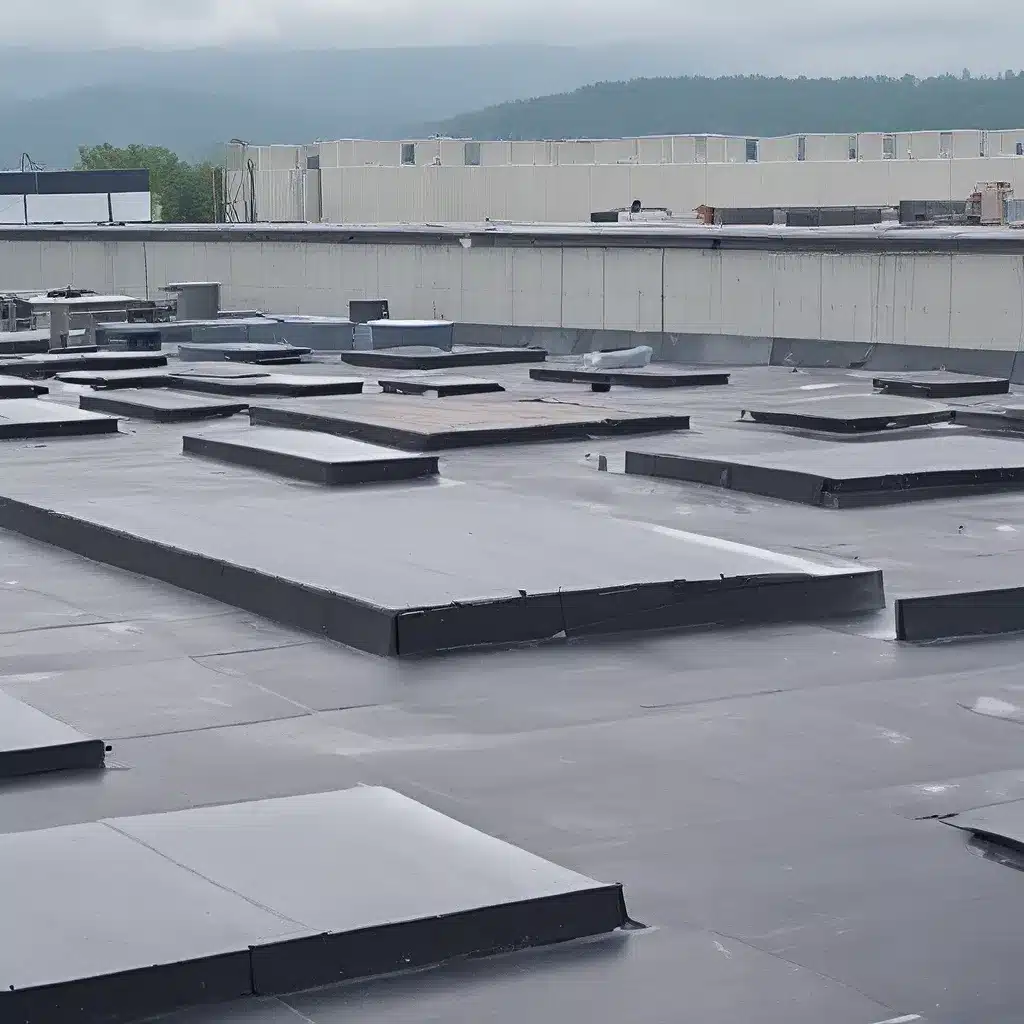
Ah, the age-old question that has puzzled building owners and facility managers for years – how can we create a healthier, more comfortable indoor environment for our tenants and employees? Well, my friends, the answer may lie in the very structure that sits atop your commercial building: the roof.
The Surprising Connection Between Roofs and Indoor Air Quality
You might be thinking, “Hold on, how does my roof have anything to do with the air quality inside my building?” Well, let me tell you, the connection is more profound than you might imagine. You see, the roof plays a crucial role in regulating the flow of air, temperature, and even the presence of pollutants within your commercial space.
Commercial roof exhaust fans, for instance, can be a game-changer when it comes to improving indoor air quality. These clever little devices work by pulling stale, contaminated air out of your building and replacing it with fresh, clean air from the outside. Imagine the difference this can make for your employees, who may have been toiling away in a stuffy, stagnant environment.
But the benefits of commercial roofing don’t stop there. Did you know that green roofs can also play a crucial role in enhancing indoor air quality? These lush, verdant rooftops act as natural air filters, trapping pollutants and releasing clean, oxygen-rich air back into the building. Plus, they can help reduce the heat island effect, which can lead to higher energy costs and even respiratory issues for your employees.
Tackling Common Indoor Air Quality Challenges
Now, I know what you’re thinking: “Okay, this all sounds great, but what about the real-world challenges we face with indoor air quality?” Well, fear not, my friends, because I’ve got you covered.
One of the biggest issues commercial building owners often encounter is poor ventilation. Whether it’s a lack of airflow or outdated HVAC systems, this can lead to a buildup of pollutants, allergens, and even mold – all of which can have a serious impact on the health and well-being of your occupants. OSHA guidelines recommend regular maintenance and upgrades to your building’s ventilation system to ensure optimal air quality.
But the problem doesn’t stop there. Toxic chemicals and off-gassing from building materials, cleaning products, and even the furniture in your office can also contribute to poor indoor air quality. By working with experienced commercial roofing professionals, you can identify and address these issues, ensuring that your employees can breathe easy (pun intended).
The Surprising Benefits of Optimizing Your Roof for Indoor Air Quality
Now, you might be thinking, “Okay, this all sounds great, but what’s in it for me?” Well, my friends, let me tell you, the benefits of optimizing your commercial roof for indoor air quality are far-reaching.
First and foremost, healthier employees. When the air they’re breathing is clean and fresh, your employees are less likely to experience respiratory issues, headaches, or other health problems that can drag down productivity and morale. And let’s not forget about the reduced absenteeism – when your team is feeling their best, they’re more likely to show up and give their all.
But the benefits don’t stop there. Improved indoor air quality can also lead to higher employee retention and recruitment. After all, who wouldn’t want to work in a building that prioritizes the health and well-being of its occupants? And let’s not forget about the cost savings – by reducing energy consumption and maintenance costs, you can ensure that your bottom line stays healthy, too.
The Future of Commercial Roofing and Indoor Air Quality
Now, I know what you’re thinking: “This all sounds great, but what about the future? What new developments can we expect in the world of commercial roofing and indoor air quality?”
Well, my friends, the future is bright. As research continues to uncover the profound impact of our built environments on our health and well-being, we can expect to see even more innovative solutions emerge. From advanced filtration systems to cutting-edge green roof technologies, the possibilities are endless.
And let’s not forget about the role of data and technology. As more and more commercial buildings adopt smart, connected systems, we can expect to see a wealth of insights and analytics that can help building owners and facility managers optimize their indoor air quality like never before.
So, what are you waiting for? It’s time to take charge of your commercial roof and unleash the power of clean, fresh air. Who knows, you might just be the hero your employees have been waiting for all along.